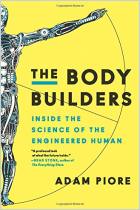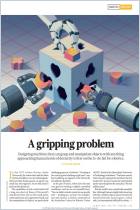
Witnessing a Wearables Transition
Assistive robots must mimic human dynamics and move toward neural-interface control.
Recommendation
Whether the patient is someone who has suffered an injury during an accident, someone recovering from a stroke or an elderly person who has trouble getting around, wearable robot technology has great potential to overcome physical limitations. Past efforts involved bulky exoskeletons that were most suitable in a rehab setting, but the future will likely involve soft exosuits that seamlessly enhance the wearer’s natural movements. Northwestern Professor José L. Pons explains how advanced algorithms might decipher neural code, helping patients to run, not just walk, through recovery.
Summary
About the Author
Jose L. Pons, PhD, is a professor in the department of Physical Medicine and Rehabilitation at the Feinberg School of Medicine and in the departments of Biomedical Engineering and Mechanical Engineering at the McCormick School of Engineering at Northwestern University. He leads a team that restores lower-limb function for patients at the Shirley Ryan AbilityLab.
















Comment on this summary or 开始讨论